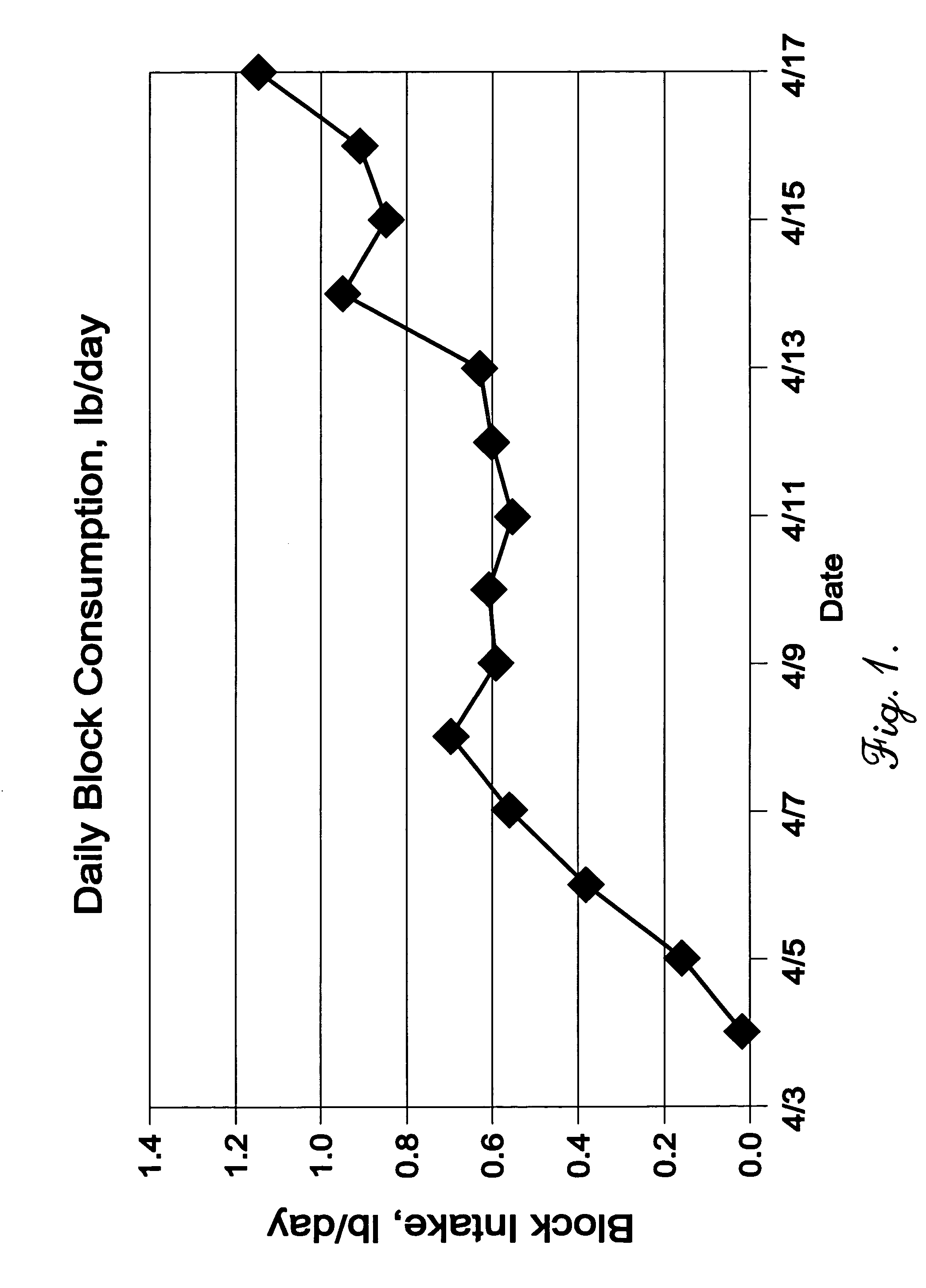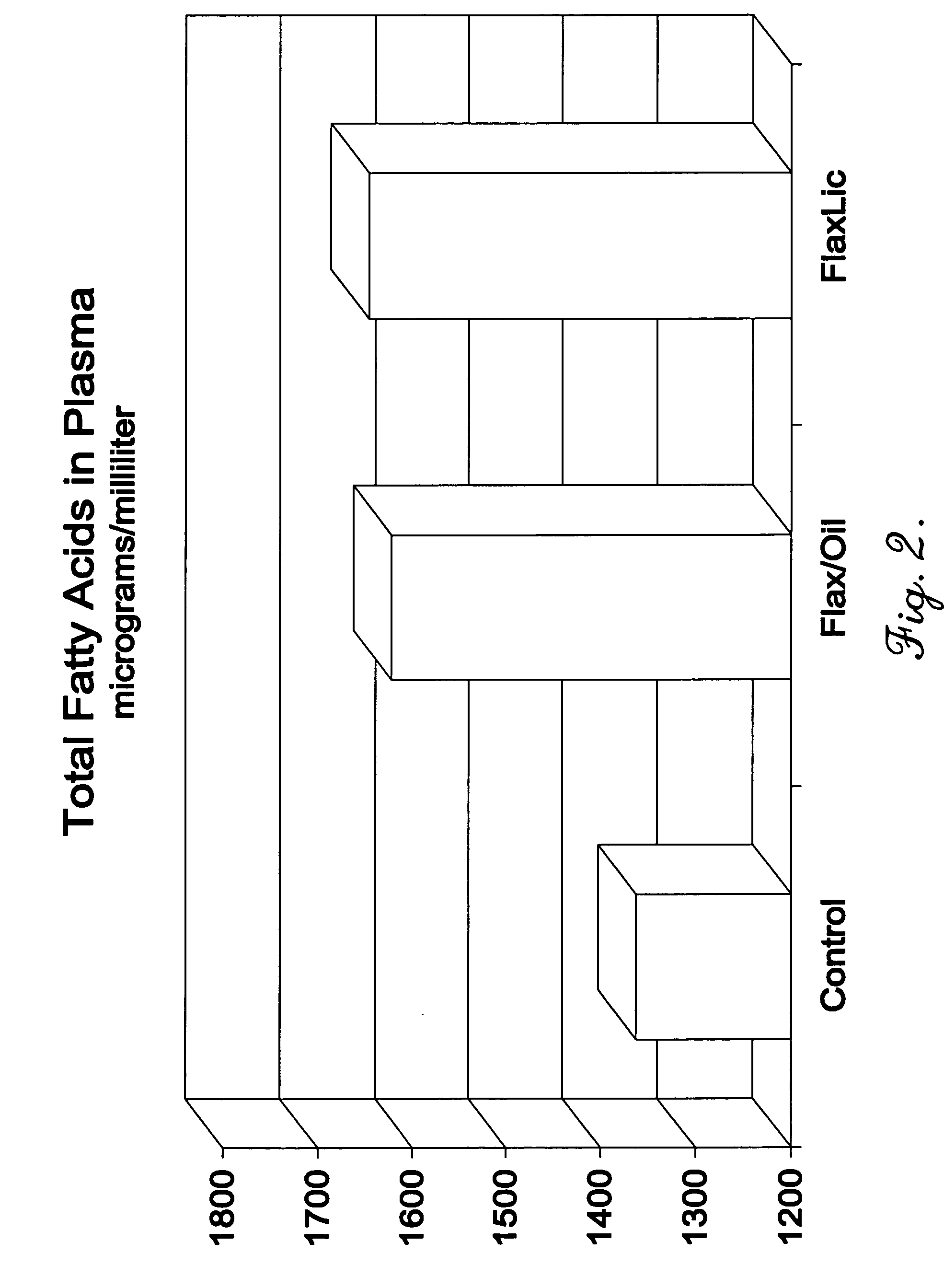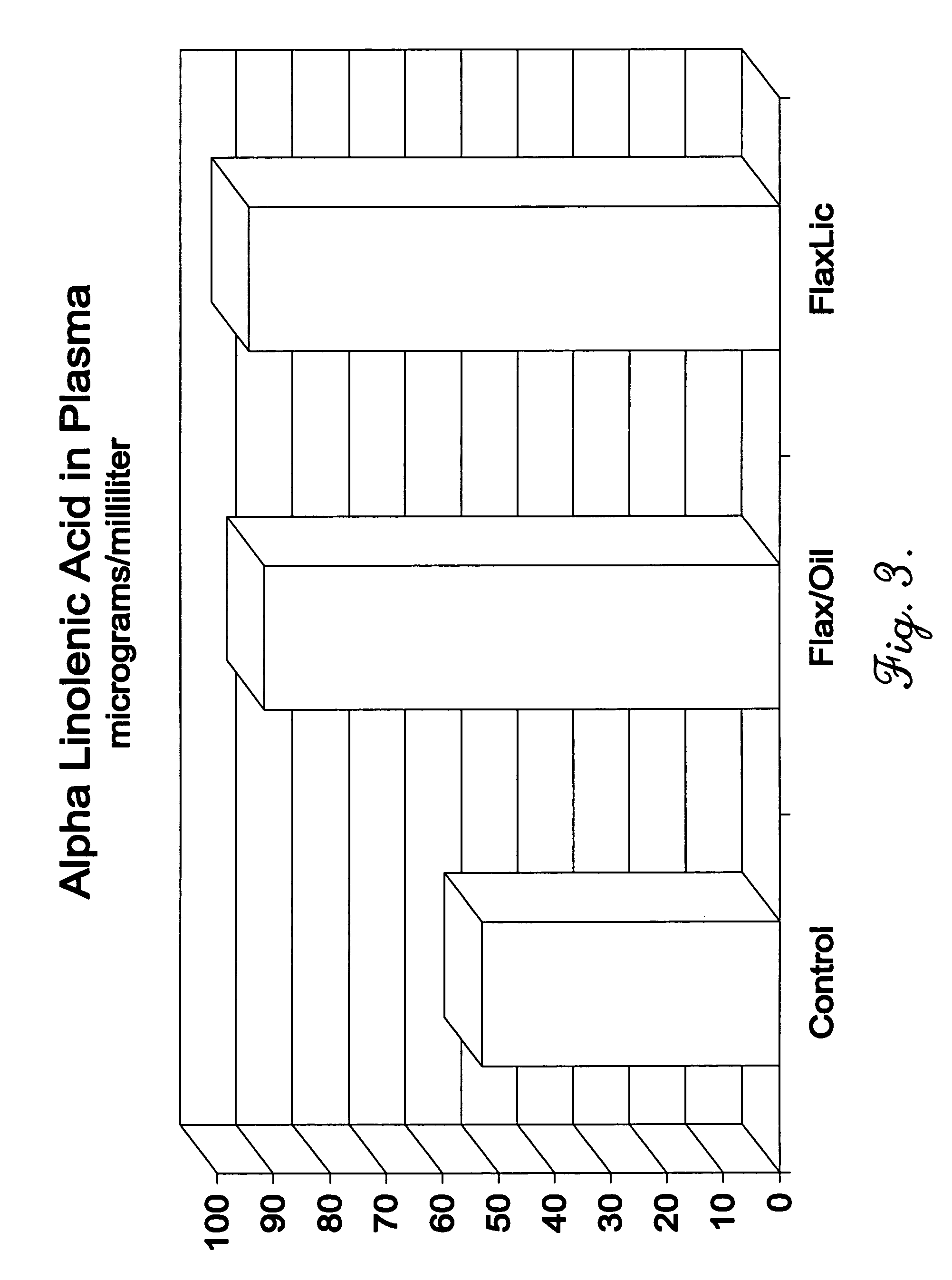Product and process for elevating lipid blood levels in livestock
a technology of lipid blood and products, applied in the field of livestock products, can solve the problems of tissue damage, injury and(or) infection, and potentially profound effects of dietary fat on the host animal's health, and achieve the effects of improving the quality of life of the host animal, reducing the risk of infection, and reducing the effect of dietary fa
- Summary
- Abstract
- Description
- Claims
- Application Information
AI Technical Summary
Problems solved by technology
Method used
Image
Examples
example 1
[0024] One preferred method for producing the feed blocks of the invention utilizes the equipment and general process scheme described in U.S. Pat. No. 5,482,729, incorporated by reference herein. Broadly speaking, the method and apparatus are designed for continuous production of final product and make use of a blender for blending starting ingredients including molasses, vegetable fat, and flax oil. The blender is coupled with an oil-heated shell and tube heat exchanger for heating the blended ingredients to a desired temperature. The heated ingredients then pass in serial order through a cyclone and a vacuum tank to dewater the heated ingredients. Next, dry ingredients including flax seed are mixed with the dewatered and heated ingredients in a screw mixer to create a homogeneous, flowable product. This product is then partially cooled and deposited in block containers for final cooling and to create the solid block product.
[0025] In more detail, 1,603 lbs of beet molasses are c...
example 2
[0026] The apparatus and method of Example 1 was also used to prepare solid feed blocks having somewhat different starting ingredients. In particular, 1,403 lbs of cane molasses was used in lieu of the beet molasses, and the amount of edible flax seed oil was increased to 195 lbs. The dry ingredients totaled 640 lbs, made up of 252 lbs of milled flax seed, 290 of cottonseed meal, 88 lbs of a mineral mixture (made up of calcium phosphate, limestone, and trace minerals), and vitamin premixes totaling 10 lbs.
example 3
[0027] In this example, a modified process was employed to produce the flax-supplemented feed blocks of the invention, as described in pending application for U.S. Letters Patent Ser. No. 10 / 205,857 filed Jul. 26, 2002, and incorporated by reference herein. In this process, the shell and tube heat exchanger described in Examples 1 and 2 are used as a preheater and a series of parallel batch atmospheric pressure final heaters are downstream of the preheater and upstream of the vacuum tank (the use of a cyclone is eliminated). The parallel final heaters are arranged and have sufficient capacity to maintain the continuity of the process. Thus, the output from the shell and tube exchanger is directed to one of the final heaters while previously received product is being processed and / or delivered in the remaining final heaters. Such two-stage heating increases the capacity of the system without disrupting desirable continuous operation.
[0028] The ingredients of Examples 1 and 2 can be ...
PUM
 Login to View More
Login to View More Abstract
Description
Claims
Application Information
 Login to View More
Login to View More - R&D
- Intellectual Property
- Life Sciences
- Materials
- Tech Scout
- Unparalleled Data Quality
- Higher Quality Content
- 60% Fewer Hallucinations
Browse by: Latest US Patents, China's latest patents, Technical Efficacy Thesaurus, Application Domain, Technology Topic, Popular Technical Reports.
© 2025 PatSnap. All rights reserved.Legal|Privacy policy|Modern Slavery Act Transparency Statement|Sitemap|About US| Contact US: help@patsnap.com



